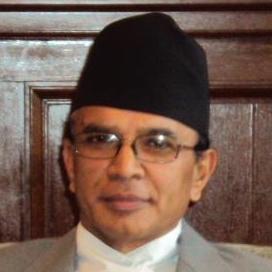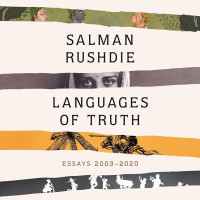Books
A practitioner’s perspective on foreign policy and diplomacy
Madhu Raman Acharya’s ‘Nepal Worldview’ breaks down the country’s international identity, its cultural matrix and diplomacy as an instrument of national power.
Madan Kumar Bhattarai
Madhu Raman Acharya, Nepal’s 20th foreign secretary since the present nomenclature came into being after the political changes of 1951, has attempted the admirable endeavour of writing a two-volume treatise on Nepal’s foreign policy and diplomacy. The very size of the work—amounting to 808 pages—is awe-inspiring to all who are interested in Nepal’s international relations.
The comprehensive book, “Nepal Worldview”, encompasses a wide spectrum of the country’s foreign relations—both from theoretical and practical perspectives. And by breaking down the book into two volumes—Foreign Policy and Diplomacy—the writer has taken a bold step, in the sense that he has attempted a dangerous, if not impossible, task of breaking the realm of foreign affairs into two seemingly water-tight compartments of foreign policy and diplomacy. But Acharya pulls it off, by combining his envious record of academic and governmental experience, to put together this book.
Yadunath Khanal, one of the foremost exponents of Nepal’s foreign policy, once said in the writings of professional officers, there is one thing one must be cautious about: facts should be presented as objectively as possible. And Acharya has refrained from possible subjective bias, presenting views of both insiders and outsiders of the realm of foreign policy.
The writer has been quite frank and modest in his approach to the book. He acknowledges his stint in the realm of foreign affairs was brief, but during this time he had the opportunity to witness the execution of Nepal’s foreign policy during its comparatively recent period of critical domestic conflict and political transition.
The first volume of the book essentially deals with the evolution of Nepal’s international identity, its cultural matrix (with a silent lament on lost Hindu identity), the role of Prithvi Narayan Shah, as modern Nepal’s architect and harbinger of foreign policy, the rebellion and the peace process, and the entry of the United Nations in the form of UNMIN and OHCHR, and role of India and other actors. The first volume also focuses on Nepal’s geopolitical situation, with the limitation of its landlocked and overwhelmingly “India-locked” status and the shifting balance of power in the world.
It assesses Nepal’s foreign policy in the touchstone of theories and accepted norms of international relations and perceived flux in the annals of foreign relations, including periodic shifts in the nuances of foreign policy over the years. He laments the persisting status of the elusive national consensus on foreign policy and has quite appropriately named Yadunath Khanal among the stalwarts of Nepal’s foreign policy.
The volume narrates Nepal’s relations with major countries like India, China, the US, European Union and others. It highlights Nepal’s exemplary role in terms of UN peacekeeping operations, the Non-aligned Movement, Nepal’s perceptions of international instruments, the role of human rights in Nepal’s foreign policy, position on refugees and humanitarian questions, and the agenda for global disarmament.
The second volume of the book dealing with Nepal’s diplomacy is shorter in length and range. It writes about diplomacy as an instrument of national power and the changing contours of the context and content of diplomatic styles and the evolution of modern diplomacy, and the transition from munsis to mandarins. It also deals with economic and development diplomacy and calls transit rights of landlocked countries as faced by Nepal as an “imperfect right” and transit through China as “a distant dream”. He has devoted a separate chapter on political economy, particularly of Nepal’s water resources, calling it a “resource-cursed” country.
In a nutshell, Acharya has achieved what he set out to give readers a comprehensive picture of foreign relations in Nepal, with a significant focus on Nepal’s compulsive ties with India and ‘diplomatic deficit’ plaguing our Foreign Ministry and diplomatic mission. His effort is applaudable, as such work has not been attempted after Yadunath Khanal and Bishwa Pradhan.
But there are some incomplete, incongruous points in the book—some sketchy references in some issues and chapters, which include his seeming hesitation to give full credit to King Mahendra as one of the foremost “movers and shakers” of Nepal’s foreign policy. This also applies to King Birendra’s Zone of Peace proposal that commanded a flagship status in Nepal’s foreign relations for one and half decades.
Another issue with the book is that it ends with no concluding chapter most possibly on assumption that all chapters are self-contained. Despite these apparent weaknesses and some mistakes, proof and content-wise, there is absolutely no doubt that the book is a solid work making a yeoman’s service in the annals of study of Nepal’s foreign relations.
Nepal Worldview (Volume 1 and 2)
Author: Madhu Raman Acharya
Publisher: Adroit Publishers
Pages: 808




 14.72°C Kathmandu
14.72°C Kathmandu











